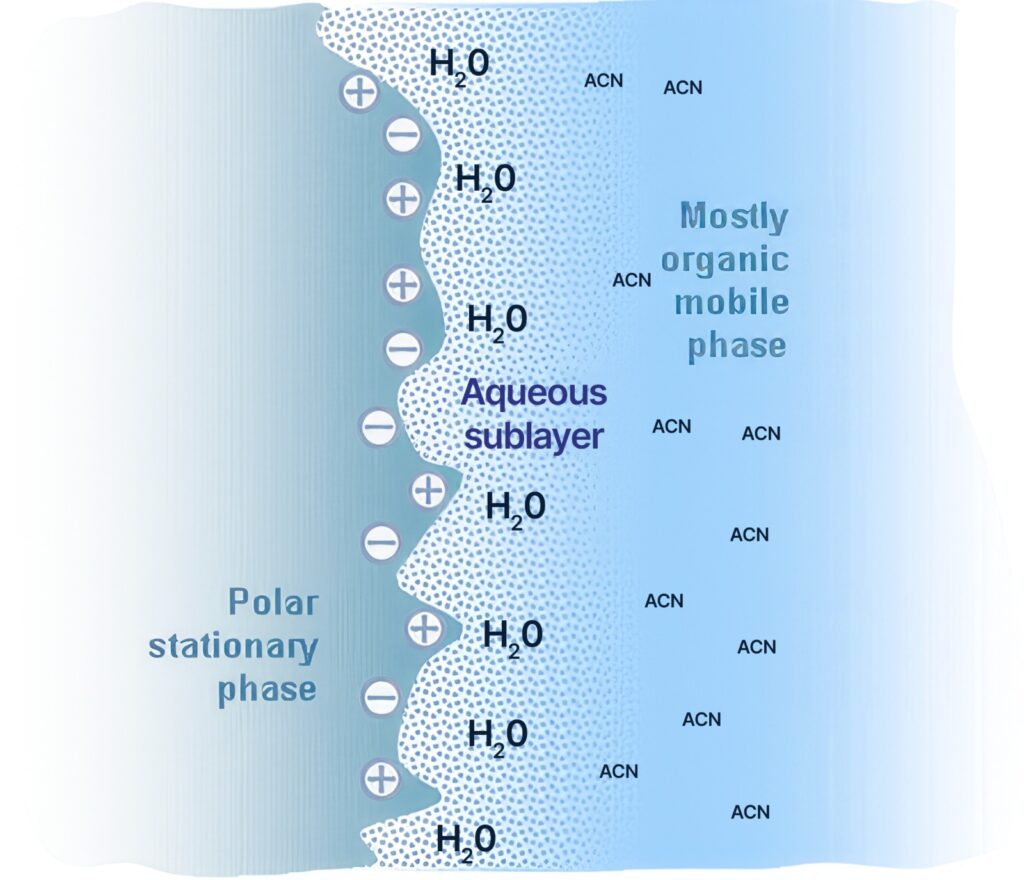HILIC
The Technology:
HILIC (Hydrophilic Interaction Liquid Chromatography) is an advanced chromatographic method ideal for the separation and retention of polar species, including polar neutral and ionized analytes. It is a variation of normal-phase chromatography, but with key differences in the mobile phase composition and separation mechanism. While normal-phase chromatography typically employs 100% organic mobile phases, HILIC uses water-miscible organic solvents, creating a unique polar environment.
Historically, HILIC phases relied on unbound silica, but recent developments have introduced bonded polar phases classified into acidic, basic, and neutral chemistries. Zodiac’s HST HILIC columns encompass these modern bonded polar phases to address a wide range of analytical challenges.

Microenvironment in Hydrophilic Interaction Chromatography
The Methodology:
Typical Mobile Phase Composition:
The mobile phase commonly includes MeCN with a small water content.
Mechanism of Separation:
- A water-rich layer forms on the surface of the polar stationary phase, creating a liquid/liquid extraction system.
- Analytes distribute between the stationary water layer and the mobile phase with low water content.
- Polar compounds have stronger affinity to the water layer, penetrate the water rich layer on the stationary phase, where -as non-polar analytes remain in the organic mobile phase resulting in separation based on polarity.
Layer-Based Retention:
- Separation predominantly occurs between the water-rich layer on the stationary phase and the organic mobile phase.
- The stationary phase is composed of ionized or polar functional groups but does not directly interact with analytes. Instead, it provides a polar environment, forming a water sub-layer that interacts with analytes.
Retention Control:
- Retention time and selectivity can be fine-tuned by adjusting:
- The concentration of MeCN (0–100%).
- The buffer type, pH, and concentration.
- Retention time and selectivity can be fine-tuned by adjusting:
Get Your Quote or Call: 040-29881474
We focus on supporting laboratory workflows & optimizing lab-wide operations
